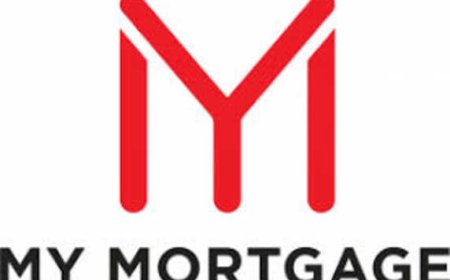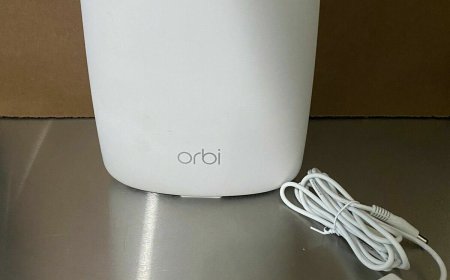Planning to Build a Capital-Efficient DEX? Uniswap V3 Flash Swap Might Be the Key
Build a capital-efficient DEX with Uniswap V3 flash swap functionality. Learn how this feature boosts profits, trades, user engagement, and more.

Youve got a solid plan to build your own DEX platform. Youve thought about slippage, liquidity, costs, and other key features. However, there's one powerful feature that many founders overlook. By integrating it into your platform, you can create a next-level DEX experience for your users. So, are you wondering, What is it? Wait, if a feature that already exists on one popular DEX platform, its Uniswap V3 Flash Swap functionality.
This feature powers your DEX platform with advanced trading strategies and faster transactions. The best part? It can be achieved even if your DEX doesnt have huge liquidity. So, if youre deciding to build your DEX with an Uniswap clone script, ask your DEX development company to integrate a feature similar to the Uniswap V3 flash swap.
So, if you want to build a platform with the Uniswap V3 flash swap, then its better to understand how flash swap works. In this article, let me break down the fundamentals of flash swap and how integrating Uniswap V3 flash swap functionality on your new DEX platform will enhance your platform's growth.
Lets dig in.
What is Uniswap V3?
Uniswap V3 is the third major release of the Uniswap protocol. Launched in March 2021, it introduced a major innovation called concentrated liquidity. This feature lets liquidity providers allocate capital more precisely within specific price ranges.
Heres detailed information on its impact.
-
This update enables liquidity providers (LPs) to put their money into specific price ranges more organized than before.
-
This makes the use of their capital much more efficient compared to earlier Uniswap versions.
So, why is it important?
Uniswap V3 handles a large part of DEX trading. Recent numbers show:
-
Daily trades often go over $1 billion.
-
The total amount of money locked in the platform is often above $3 billion (though these numbers can change in this fluctuating ecosystem).
Better Features:
-
Different Fee Options: Gives LPs and traders more choices and flexibility.
-
Technical Improvements: Makes the platform more attractive, especially for professional traders.
What Is Uniswap V3 Flash Swap?
It is a built-in flash swap feature seen in Uniswaps V3 model. Thai functionality lets your platform users borrow tokens from the pools without providing any collateral. They can use those tokens to trade or do something else to make a profit from them. The borrowed funds should be paid in single transactions without transaction fees.
If something goes wrong or the repayment isnt completed correctly, the entire transaction will be reverted, and it will appear as if no transaction happened for the user.
This system or functionality on your new DEX platform will create a positive decentralized experience for your user. So, a user can capitalize with flash swaps without any risks, and platform owners can make profits without facing any losses.
Additionally, this feature on your platform will attract more users or traders who want to make crypto profits with less risk. Most traders prefer to make profits by employing the arbitrage strategies.
Now, lets explore
Practical Use Cases Of Uniswap V3 Flash Swap
Here are some real-world use cases of how integrating Uniswaps V3 flash swap feature in your DEX platform will benefit your users.
Arbitrage Trading
Let's say a user spots a price difference between your DEX and another platform. They will borrow Token A using a flash swap and sell it elsewhere for a profit, then return the borrowed amount within the same transaction. This creates volume for your DEX and benefits the trader to capitalize on the crypto sector without providing any collateral.
Collateral Swapping
Sometimes, a user using lending protocols like Aave wants to change their collateral funds. In this case, they can use flash swap functionality on your DEX to obtain funds, use those funds to adjust their positions, change collateral, and repay in a single transaction. Everything without offering any collateral.
Debt Repayment
Some users might want to repay their loans with a different asset than they currently hold. Flash swaps allow them to borrow the needed token, perform the swap, and settle the loan without hassles.
These types of transactions on your DeFi protocol will increase engagement and improve overall user experience on your platform.
So, its time to understand
The Mechanics Behind Uniswap V3 Flash Swaps
In Uniswap V3, the flash swap functionalities are built directly into the main smart contracts. This functionality helps users obtain faster and secure flash loans than other platforms that rely on external or separate smart contracts.
Heres how Uniswaps V3 flash swap functionality works.
-
When a user starts a flash swap, Uniswap V3 instantly sends you the tokens you asked for.
-
They can use them for any purpose they wish to profit. And, they are asked to repay the funds after making a profit in a single transaction.
-
At the end of the transaction, the smart contract checks if the user returned the tokens or paid for them using other assets.
-
If the user fails to repay, then the entire transaction will be reversed and show as if it never happened.
So, your platform never loses any funds.
Fresh Data: The recent data from DeFilama shows that Uniswap V3 has gained more users and recorded over 1.2 billion 24-hour DEX volume by implementing this flash swapping functionality.
These numbers show how much potential lies in this DEX space. If youre considering building your own DEX platform using an Uniswap clone script with a flash swap feature, then here are some key points you need to keep in mind.
How to Pick a Clone Script With the Flash Swap Feature?
So, here are some functionalities you must ensure if your development firm integrates while creating your platform. This is very important because most development firms implement standard features without implementing core flash-swapping functionalities.
Heres what to check for:
-
Ensure whether the core contracts support borrowing and repayment logic within a single transaction.
-
Check if the router is optimized for flash swap flows.
-
Swap fees and slippage are calculated dynamically on the platform.
-
Smart contracts are audited with attention to reentrancy and flash attack protection.
-
Developer documentation is clear and includes flash swap examples.
Keep this in mind: This feature can offer a big boost to your exchanges flexibility and early adoption. But only if its implemented correctly.
Now, lets see
Some Best Practices to Follow for Reliable Results
While flash swap functionalities drive user adoption and offer more benefits to users and platform founders, implementing secure smart contracts should be your main priority in the DEX creation.
You must ensure your smart contracts are tested completely. Focus on edge cases, repayment logic, and interactions with external DeFi protocols. Conduct external audits before going live with flash swap support.
Final Thoughts
So, if you aim to build a capital-efficient DEX platform, then Uniswaps V3 flash swap functionality must be on your radar. By implementing this feature on your DEX solution, your platform can gain more engagement, user base, and growth.






































